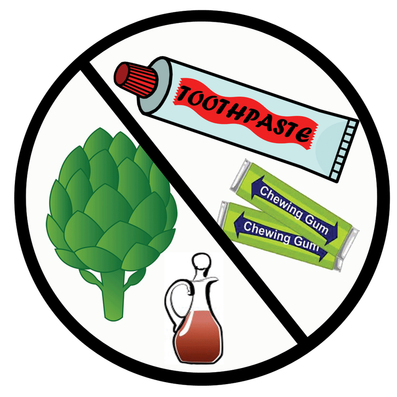
My most interesting wine tasting experience came many years ago courtesy of a Mondavi winery rep who hosted a component tasting.
After explaining the obligatory Wine 101 terms like legs, viscosity, staining, nose and meniscus, he began the component element of the tasting. It was unpleasant but revelatory. To be able to recognize how tannic or acidic a wine might be, we were asked to swish some nasty chemical-tasting potions around our palate.
Then the wine rep shared this story: A friend dining at the Napa area home of Peter Mondavi raved so much over one of that evening's wines that Peter sent a case home with the guest. A few days later, Peter asked if he was enjoying the wine. The guest admitted that the first bottle didn't resemble what they had been served at Peter's so they tried a second bottle, but were also disappointed with that one.
Peter said, "Let me pick up the rest of the case, and I'll replace it with another case of the same wine." But after sampling the "new" case, the guest once again admitted the wine still had an "off taste."
So Peter began to question him. "Tell me everything you do when you arrive home before you drink the wine." The guest related that he would change his clothes, check the mail. talk with his wife, brush his teeth then open the wine for a glass before dinner. "That's the culprit," Peter told him. "Toothpaste will change the way any wine tastes."
But toothpaste isn't the only no-no to avoid to enjoy your wine. Chewing gum (any flavor), breath mints or certain candies are also foes. And...eating artichokes before-or-with wine will make any wine taste sweeter than it should. But by far the über-villain for your wine palate is vinegar. This is why Europeans serve salads after their entree.
There is, however, a solution to the vinegar dressing problem. Create your own salad dressings by substituting wine for vinegar in the recipe. (For examples, check out this month's recipes on the homepage.)
After explaining the obligatory Wine 101 terms like legs, viscosity, staining, nose and meniscus, he began the component element of the tasting. It was unpleasant but revelatory. To be able to recognize how tannic or acidic a wine might be, we were asked to swish some nasty chemical-tasting potions around our palate.
Then the wine rep shared this story: A friend dining at the Napa area home of Peter Mondavi raved so much over one of that evening's wines that Peter sent a case home with the guest. A few days later, Peter asked if he was enjoying the wine. The guest admitted that the first bottle didn't resemble what they had been served at Peter's so they tried a second bottle, but were also disappointed with that one.
Peter said, "Let me pick up the rest of the case, and I'll replace it with another case of the same wine." But after sampling the "new" case, the guest once again admitted the wine still had an "off taste."
So Peter began to question him. "Tell me everything you do when you arrive home before you drink the wine." The guest related that he would change his clothes, check the mail. talk with his wife, brush his teeth then open the wine for a glass before dinner. "That's the culprit," Peter told him. "Toothpaste will change the way any wine tastes."
But toothpaste isn't the only no-no to avoid to enjoy your wine. Chewing gum (any flavor), breath mints or certain candies are also foes. And...eating artichokes before-or-with wine will make any wine taste sweeter than it should. But by far the über-villain for your wine palate is vinegar. This is why Europeans serve salads after their entree.
There is, however, a solution to the vinegar dressing problem. Create your own salad dressings by substituting wine for vinegar in the recipe. (For examples, check out this month's recipes on the homepage.)

 RSS Feed
RSS Feed